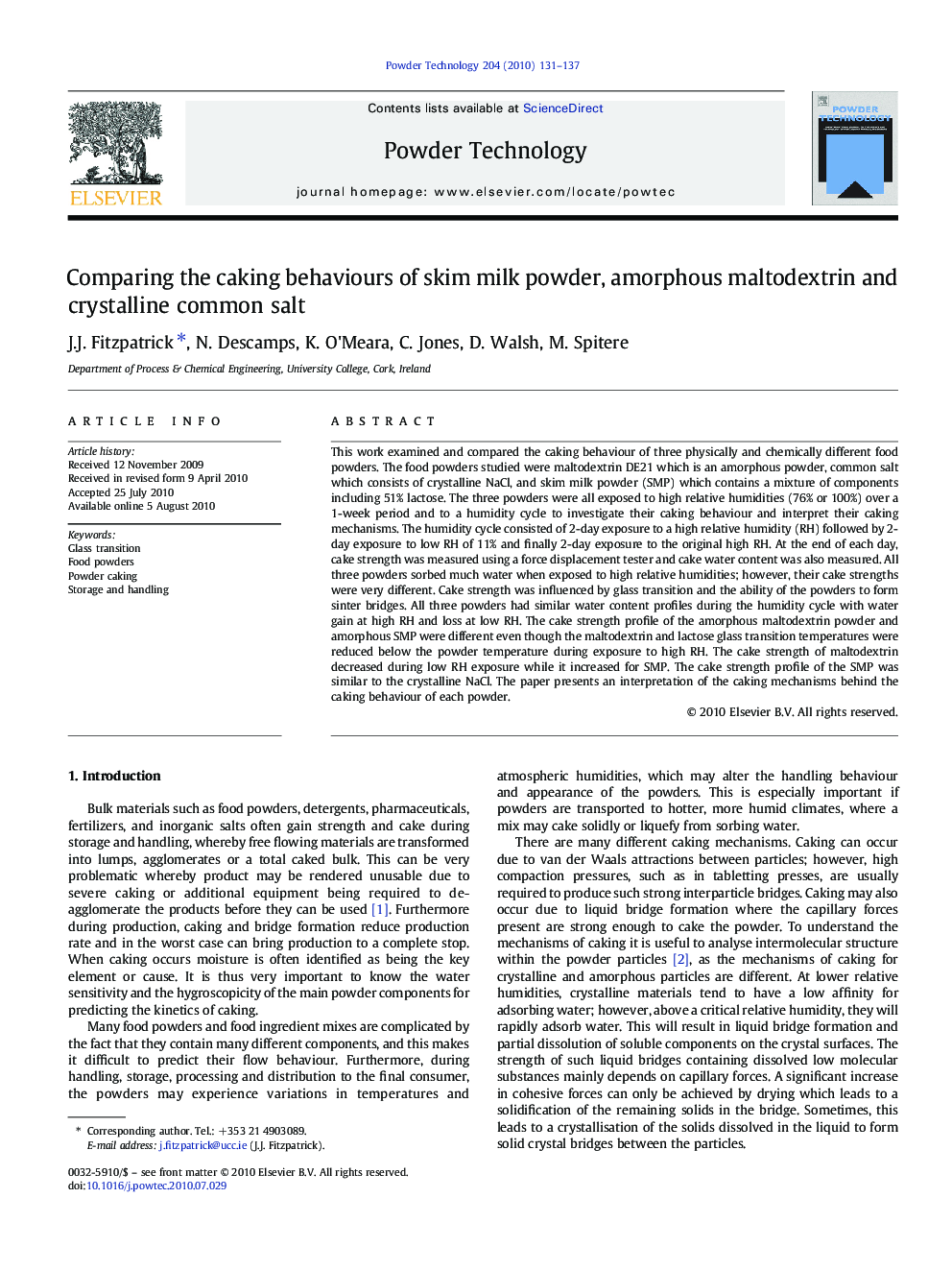| کد مقاله | کد نشریه | سال انتشار | مقاله انگلیسی | نسخه تمام متن |
|---|---|---|---|---|
| 237766 | 465724 | 2010 | 7 صفحه PDF | دانلود رایگان |

This work examined and compared the caking behaviour of three physically and chemically different food powders. The food powders studied were maltodextrin DE21 which is an amorphous powder, common salt which consists of crystalline NaCl, and skim milk powder (SMP) which contains a mixture of components including 51% lactose. The three powders were all exposed to high relative humidities (76% or 100%) over a 1-week period and to a humidity cycle to investigate their caking behaviour and interpret their caking mechanisms. The humidity cycle consisted of 2-day exposure to a high relative humidity (RH) followed by 2-day exposure to low RH of 11% and finally 2-day exposure to the original high RH. At the end of each day, cake strength was measured using a force displacement tester and cake water content was also measured. All three powders sorbed much water when exposed to high relative humidities; however, their cake strengths were very different. Cake strength was influenced by glass transition and the ability of the powders to form sinter bridges. All three powders had similar water content profiles during the humidity cycle with water gain at high RH and loss at low RH. The cake strength profile of the amorphous maltodextrin powder and amorphous SMP were different even though the maltodextrin and lactose glass transition temperatures were reduced below the powder temperature during exposure to high RH. The cake strength of maltodextrin decreased during low RH exposure while it increased for SMP. The cake strength profile of the SMP was similar to the crystalline NaCl. The paper presents an interpretation of the caking mechanisms behind the caking behaviour of each powder.
Graphical AbstractThis work examined and compared the caking behaviour of three physically and chemically different food powders. The powders were all exposed to high relative humidities (76% or 100%) over a 1-week period and to a humidity cycle to investigate their caking behaviour and interpret their caking mechanisms.Figure optionsDownload as PowerPoint slide
Journal: Powder Technology - Volume 204, Issue 1, 10 December 2010, Pages 131–137